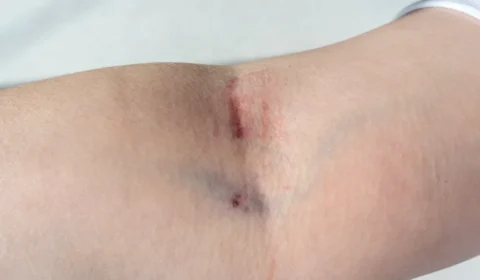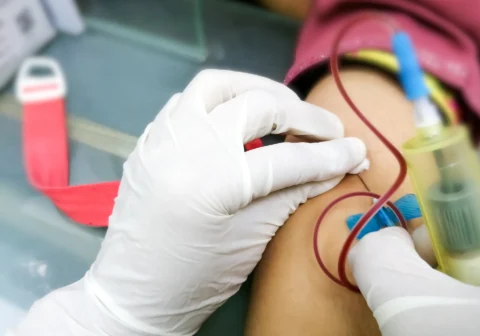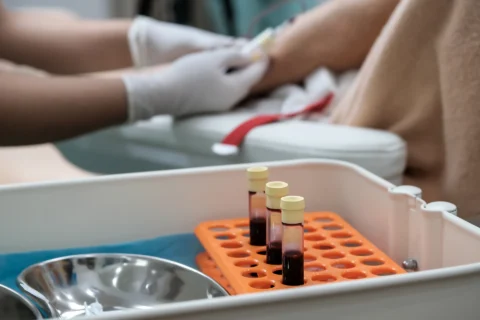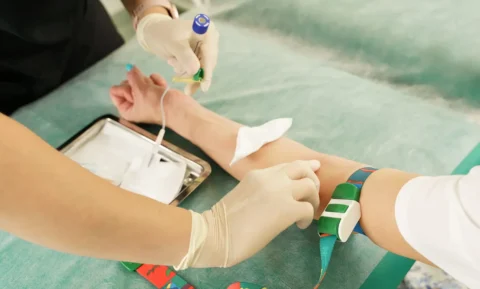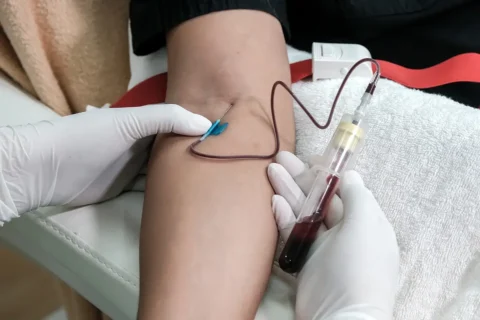Understanding Best Practices for Catheter Insertion, Care and Removal
Have you ever cringed at the sight of a needle being inserted into the skin? If difficult or painful intravenous access has you or a loved one stressing over medical procedures, there is a solution – the butterfly needle. Also called winged infusion sets, butterfly needles are revolutionizing how healthcare professionals are able to draw blood and deliver intravenous therapies with minimal pain or discomfort.
For patients with chronic conditions requiring frequent blood work or IV therapies, as well as those receiving end-of-life care, butterfly needles provide a safer, gentler option that reduces potential complications.
From hospital laboratories to cancer treatment centers, butterfly needles are transforming the patient experience and improving care outcomes.
Anatomy of a Butterfly Catheter
Butterfly needles differ significantly from traditional straight needles through their unique design. At the core is a small, hollow needle made of fine gauge medical steel. This needle is what penetrates the skin to access veins or perform an injection.
In contrast to a straight needle, a butterfly catheter incorporates two flexible plastic wings attached to the needle a short distance from the tip. These wings are a defining characteristic and set butterfly needles apart. They provide guided stability during insertion and act as directional markers to precisely access veins.
Components
A butterfly catheter consists of the following key components:
- Needle: A short, hollow stainless steel needle that is usually covered by a plastic sheath or winged covering. This is what penetrates the skin to enter the vein.
- Wings: Flexible plastic “wings” located on either side of the needle that provides a stable grip and guidance for easier insertion and stabilization of the needle in the vein.
- Tubing: A short, flexible transparent tubing that is permanently attached to the rear of the needle. It can have a luer lock connection on the end to securely twist onto a syringe or IV line.
Compared to intravenous (IV) catheters, butterfly needles involve leaving the actual hollow needle inside the vein, whereas IV catheters utilize just a thin, flexible plastic catheter with no needle left in place.
Due to its smaller needle size, a butterfly catheter is easier to insert into shallow or delicate veins compared to an IV catheter and traditional venipuncture needles.
Types and Sizes
Butterfly catheters come in different types and sizes.
| Types | 1. Standard safety devices | Equipped with 21 or 23-gauge needles and a tube. Once use is complete, the phlebotomist retracts the needle manually before disposal. |
| 2. Push button safety devices | Feature an integrated safety mechanism that automatically retracts the needle after use, protecting healthcare workers from accidental needlestick injuries. | |
| Sizes | Butterfly needle gauges | Range from 18 to 27, with higher gauge numbers representing thinner needles with smaller diameters. |
| Common sizes used | 21, 23, and 25 gauge. Smaller gauge numbers denote thicker, longer needles while larger gauges are thinner and shorter. | |
| Small animal butterfly sets | Contains the smallest butterfly needles, ranging from 25 to 27 gauge. | |
| Butterfly needle variations | Available in a wide range of needle lengths and tubing lengths to suit different medical needs – for example, the tubing may range from 8 to 15 inches. |
Uses and Applications of Butterfly Catheters
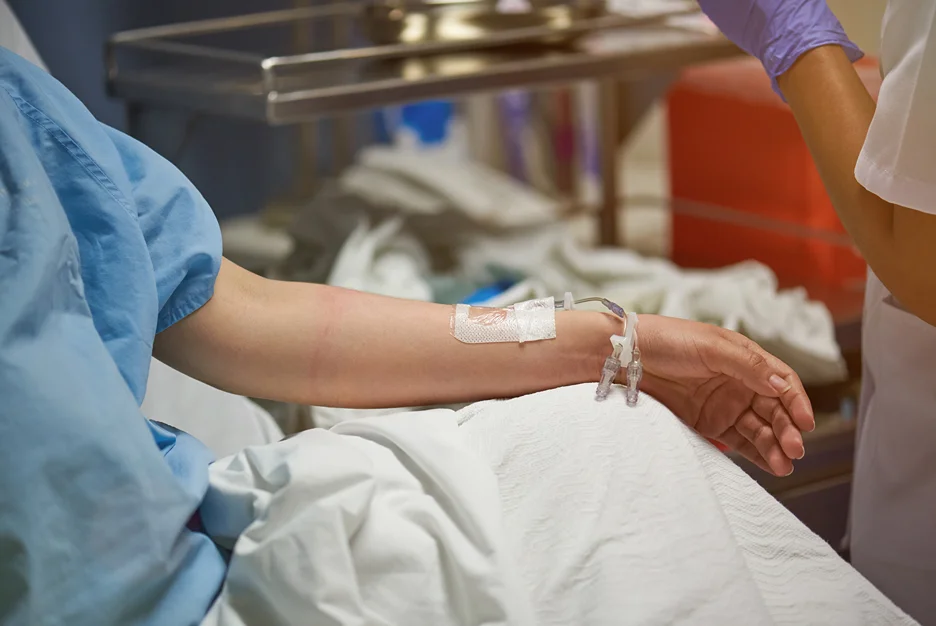
Butterfly catheters have a variety of important medical uses and applications. Their small, flexible design makes them well-suited for several types of procedures involving intravenous or subcutaneous access.
1. Blood Draw Process
Butterfly catheters can be used for direct blood draws as well as establishing intravenous access for blood samples. For a blood draw, the flexible cannula of the butterfly is inserted just under the skin into a vein. This allows for easy blood flow out of the vein and into a collection tube. Alternatively, an IV line can be started with a butterfly and a syringe used to draw blood from the line. This is known as a blood drop rather than a direct venipuncture.
2. Short-Term Infusions
Butterfly catheters are commonly used for short-term infusions lasting six hours or less. This includes subcutaneous infusions where IV fluids or medications are delivered just under the skin rather than directly into a vein. Butterflies are also well-suited for brief intravenous infusions such as hydration or antibiotic therapy.
3. Blood Sample Hemolysis
One potential concern is hemolysis or the breaking open of red blood cells during the collection process. However, studies show the rate of hemolysis from proper butterfly technique is very low and does not significantly impact most blood analysis results.
4. Specialized Uses
Beyond basic uses, butterfly catheters have applications in specialized medical areas as well. This includes chemotherapy medications administered via central lines, acupuncture or herbal medicine infusions in traditional Chinese practices and IV therapies in integrative or complementary medicine settings. Their small gauge and gentle insertion make butterfly catheters a good choice for delicate or alternative medical procedures.
Advantages of Butterfly Catheters
Butterfly catheters provide several important advantages over other types of intravenous access devices:
Precise Placement
The flexible straw-like cannula of the butterfly catheter allows for very precise insertion and placement within blood vessels. This is useful for accessing veins that are difficult to cannulate, such as fragile or deeply embedded veins. Butterflies are also well-suited for superficial veins nearer to the skin’s surface.
Reduced Risk
Compared to other catheters that require larger insertion needles, butterfly catheters pose a decreased risk of infection by minimizing trauma to the vessel and surrounding tissues. Their small gauge also reduces the already low risk of hemolysis when blood draws are performed properly.
Versatility
Butterflies are available in an array of sizes from smaller 24 gauge for delicate veins up to 20 gauge for larger vessels. This makes them suitable for a wide range of patient populations and vessels, from the tiny arm veins of newborns to the saphenous vein of adults.
Patient Comfort
For blood draws, short infusions, or IV placement in sensitive patients, butterfly technology is less intimidating, painful, and stressful than larger bore catheters. This makes them preferable for use in pediatric patients as well as fragile adult patients, such as those in palliative care units who require frequent IV access but have difficult veins. Overall they provide a more comfortable experience.
Utilizing Butterfly Catheters
There is a basic process for utilizing butterfly catheters to obtain blood samples or perform short infusions:
- Identify the vein: The healthcare provider will select the appropriate vein based on the intended purpose and patient factors. Common sites include arm or hand veins in human patients.
- Prepare the equipment: Gather the butterfly catheter, a vacuum tube or syringe, and an alcohol swab.
- Clean the site: Use the alcohol swab to clean the skin where the vein is accessed and allow it to dry fully.
- Insert the needle: Hold the butterfly by the stabilizing wings and insert the needle at a 10-30 degree angle into the selected vein.
- Advance the needle: Gently advance the needle into the vein until blood appears in the collection tube or syringe.
- Collect the sample: Draw the necessary amount of blood into the collection tube or syringe. For infusions, attach the tubing to the IV bag or syringe.
- Remove the needle: Once complete, carefully withdraw the needle while stabilizing the vein with the other hand.
- Apply pressure: Apply gauze or a bandage to stop any bleeding from the insertion site.
- Activate safety: Engage the safety mechanism on the butterfly hub by firmly grasping it.
- Dispose of properly: Discard the used butterfly into an approved sharps container.
Safety and Precautions
Several important safety measures should be followed when working with butterfly catheters:
| Reminders | Description |
| Protective Sheath and Retractable Needle | The sheathed needle provides protection from accidental sticks both during and immediately after use. Retractable needles ensure the needle is fully covered after blood collection or infusion to prevent sharps injuries. |
| Pain Medication and Other Measures | For patient comfort and compliance, providers may consider administering pain medication cream or spray before insertion. Other relaxation measures like distraction or breathing techniques can help as well. |
| Hygiene and Sterilization | The strict aseptic technique prevents the transmission of bloodborne pathogens. Providers must properly clean and disinfect work surfaces, properly dispose of used equipment, and practice diligent hand hygiene. Catheters themselves should be used following manufacturers’ sterilization or packaging guidelines. |
| Proper Disposal | After use, retractable needles must be fully engaged before disposal in an approved sharps container. Strict adherence to disposal procedures safeguards healthcare professionals and sanitation workers from accidental needlesticks. |
Partner with Our Team – Get in Touch!
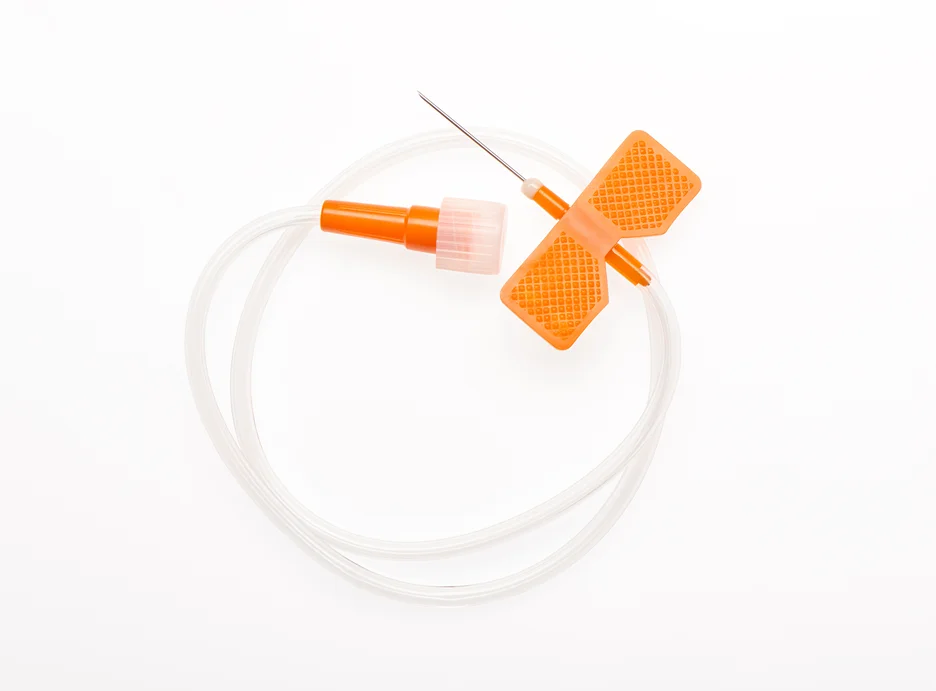
Butterfly catheters are a valuable tool when minimal invasiveness is needed. However, ongoing education is critical for healthcare workers to properly select and employ them. Adaptation of best practices based on emerging evidence is key to the safest possible care. With a continued focus on training and safety, these catheters can interface helpfully across traditional and modern modalities.
Face Med Store supports optimized care and welcomes queries on these important medical products. Don’t hesitate to contact us!
